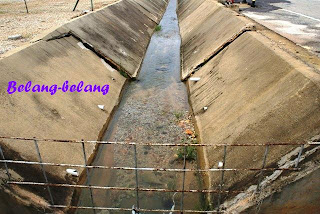Precast U-Drain

Date of Construction: October - December 2010 A 10-year-old trapezoidal monsoon drain was found cracked and damaged. Damaged trapezoidal drain From visual observation, defect may be caused by: Differential soil settlement below and on the sides of the trapezoidal drain. This causes drain structure to move unevenly. Results in crack of drain. Through these cracks, water seepages occur. The flow loosens and erodes the soil that supports the drain. Settlement increases with time. Recommendation: To reconstruct the monsoon drain using precast U-drain . Advantages: 1. Precast – quality of work can be controlled. 2. Shorter duration of work completion - faster speed of construction. 3. U-shape of drain requires less working space thus will not affect trenches and piping. 4. Drain also acts as retaining wall – provides soil stability from lateral movements. Disadvantages: 1. Higher cost by 3.6% as compared to in-situ re-construction of trapezoidal drain. 80% completion 100% Co...

